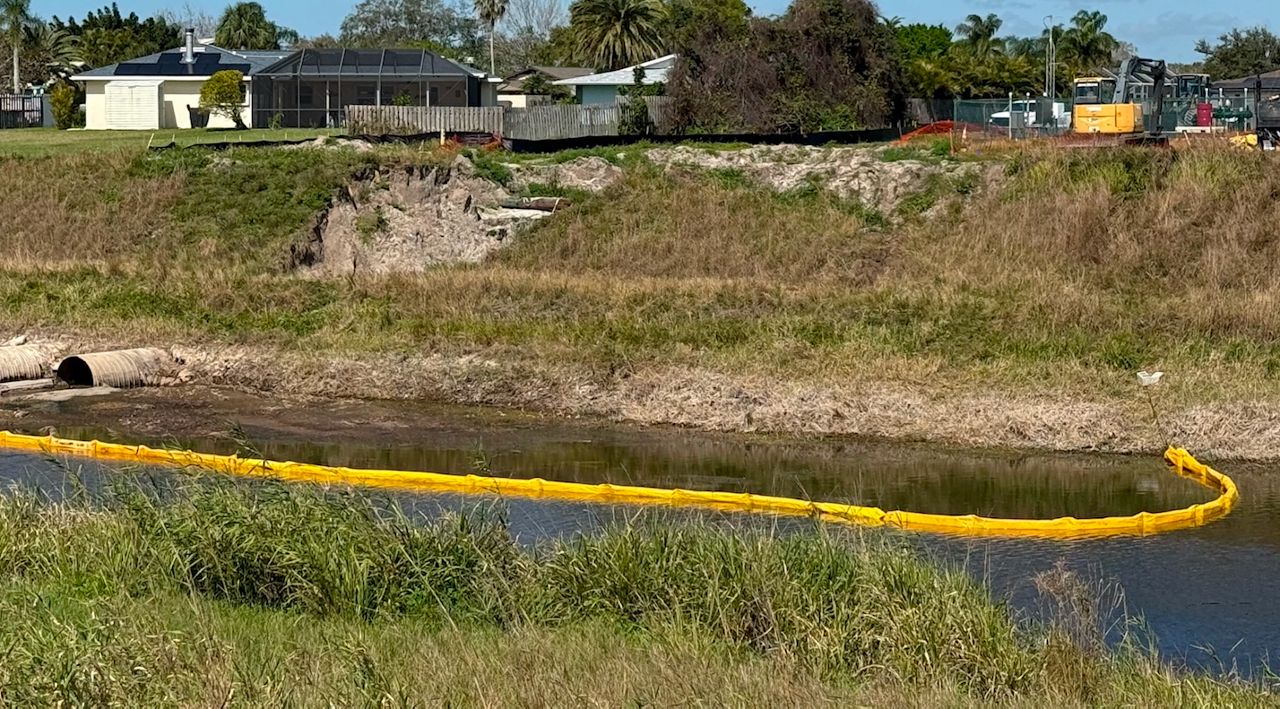ORLANDO, Fla. — The Florida Department of Health in Orange County is cautioning the public about blue-green algae in Lake Mabel.
Water sample testing is underway.
Blue-green algae have the potential to produce toxins. Since environmental conditions can change at any time, it is important to exercise caution, even if presence of toxins has not yet been confirmed.
Residents and visitors are advised to take the following precautions:
- Do not drink, swim, wade, use personal watercrafts, or come into contact with waters where there is a visible bloom.
- Wash your skin and clothing with soap and water if you have any contact with algae, or discolored or water that smells unpleasant.
- Keep pets and livestock away from the area to avoid any contact with water. Waters where algae blooms are present are not safe for animals. Pets and livestock should use an alternative source of water when algae blooms are present.
- Do not cook or clean dishes with water contaminated by algae blooms. Boiling the water will not eliminate toxins.
- Eating fillets from healthy fish caught in freshwater lakes experiencing blooms is safe. Rinse fish fillets with tap or bottled water, throw out the guts, and cook fish thoroughly.
- Do not eat shellfish in waters with algae blooms.
The Florida Department of Environmental Protection (DEP) and partners collect algae samples from reported bloom locations. After samples are analyzed at their laboratory, the toxin results can be viewed on Protecting Florida Together or on DEP’s
What is Blue-Green Algae?
Blue-green algae are a type of bacteria that is common in Florida’s freshwater environments. A bloom occurs when rapid growth of algae leads to an accumulation of individual cells that discolor water and often produce floating mats that emit unpleasant odors.
Blue-green algae blooms can also appear as scum, foam, or paint on the surface of the water in various colors.
To learn more about the appearance of algae blooms, visit Protecting Florida Together.
Some environmental factors that contribute to blue-green algae blooms are sunny days, warm water temperatures, still water conditions, and excess nutrients. Blooms can appear year-round but are more frequent in summer and fall. Many types of blue-green algae can produce toxins.
Blue-green algae may not always be visible as a bloom, but it can still be present in the water.
Is Blue-Green Algae Harmful?
Blue-green algae can produce toxins, which can be harmful to humans and pets as well as ecosystems, including fish and other aquatic animals. Sensitive individuals (e.g., children, the elderly and those who are immunocompromised) may still be at risk even at low concentrations and should avoid any exposure.
For additional information on potential health effects of algae blooms, visit the Florida Department of Health's harmful algae blooms webpage.










